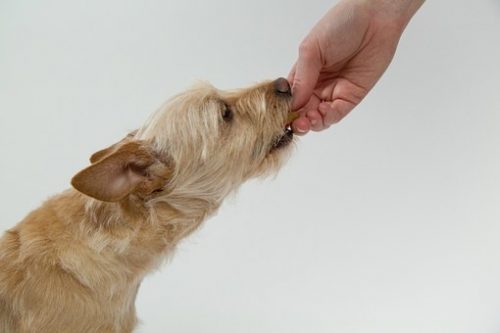Classical Conditioning in Dogs
Everyday, classical conditioning can be observed among dogs. Classical Conditioning can be used for and can be a great foundation in creating training modules and plans.

Valley Cottage, United States – December 23, 2016 /PressCable/ —
Most of us are probably familiar with the concept of classical conditioning. In a nutshell, classical conditioning involves learning to associate a stimulus which already brings a certain response with a new stimulus, so that the new conditioned stimulus brings about a similar response.
What is Classical Conditioning?
Classical conditioning, also known as Pavlovian conditioning, was accidentally discovered like many other great scientific discoveries. Physiologist Ivan Pavlov was studying about digestion and observing the salivation of dogs in response to food, when he noticed that the dogs would start to salivate whenever he or his assistant would enter the room, even when they were not bringing any food.
Pavlov’s observation led to further investigation; he modified the experiment to examine the observed phenomena. He rang a bell every prior to feeding, and eventually the dog salivate with the ring of the bell, even when there was no food to be presented after.
Pavlov demonstrated how a seemingly meaningless stimulus become meaningful to a dog when followed by another stimulus that elicits a natural response. In his experiment, the bell which was consistently followed by food led to just the sound of the bell alone trigger salivation.
Such great discovery has had a great influence on learning ever since.
Classical Conditioning at Work
Everyday, classical conditioning can be observed among dogs. When the dog owner gets the leash, the dog jumps up and down in excitement, anticipating that they are going for a walk in the park, even when the dog owner is just fixing the leash. When the dog hears a doorbell, it immediately gets the indoor slippers of the dog owner, thinking that the dog owner is at the door, even when it is a pizza delivery. When the dog is brought to the veterinarian and gets an injection shot every time, it associates the veterinarian to pain the injection shot brings, even during visits to the veterinarian for grooming check-up.
You may have heard some dog owners who experienced similar scenarios say that their dogs have a “sixth sense.” However, their dogs are able to predict responses or consequences, not because of this “sixth sense,” but because they have learned the cause-effect or stimulus-response associations through repeated circumstances – through classical conditioning.
These everyday scenarios prove that classical conditioning can be observed among dogs even without any direct and purposeful training. However, these unintended classical conditioning scenarios observed on a daily basis suggest that classical conditioning can be used for and can be a great foundation in creating training modules and plans that will maximize these learned associations to a great advantage.
In dog training, the stimulus-response association is repeatedly or routinely exposed to the dog. Dogs pay more attention to patterns, thus consistency in classical conditioning is very important. For instance, when the dog is asked to sit and it is given a treat for putting its behind on the ground, after a few repetitions, the command ‘sit’ may become associated not just with sitting down, but also with the treat.
Classical conditioning is also used in designing modern technology that help make training dogs easier. For instance, anti-bark collar is a device designed to make training dogs easy, by helping provide consistency in curbing inappropriate, nuisance, and excessive barking. These anti-bark collars are not intended to harm dogs, but to correct undesirable behavior, through learned stimulus-response associations. They are primarily designed to have dogs associate and classically condition the unwanted and excessive barking with the uncomfortable stimulus, and then eventually to stop doing it until there is no need of the stimulus as a reminder.
It is important to take note, however, that in dog training, classical conditioning is not the only association taking place. Principles of operant conditioning, the changing of behavior by using reinforcements that are given after the desired response, also play a key part in most, if not all, dog training.
For more information, please visit http://ourk9.com
Contact Info:
Name: Andy
Organization: Our K9
Address: 616 Corporate Way, Valley Cottage United States
Phone: 6463959636
Release ID: 156469